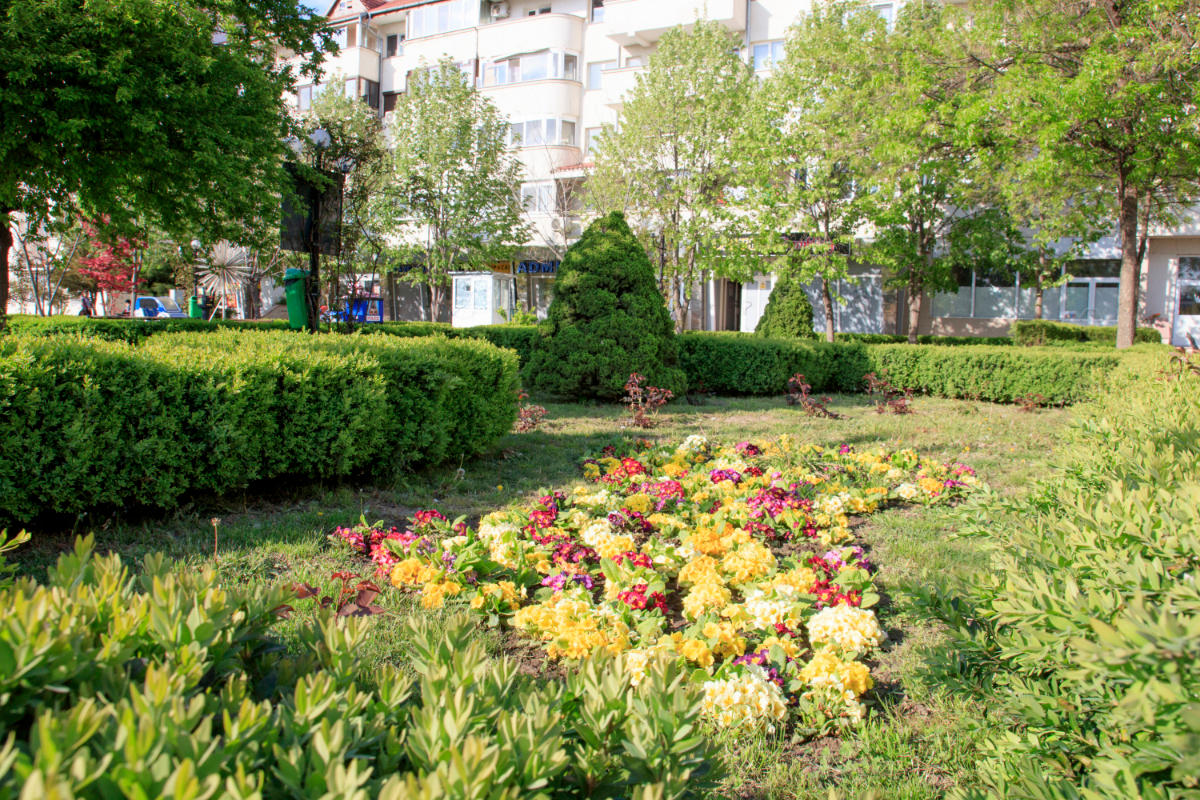Flower park Calarasi
Category ParkLOCATION
Prelungirea București
910088 Calarasi
DESCRIPTION
The Flower Park, located in the North-West area of Calarasi, is one of the local attractions. The park serves as a recreational center for cycling and cultural events. Calarasi ranks 43th in the top 50 cities in Romania, ranked by Capital magazine, being equal with Tecuciul, both cities having 4.10 points. It is overtaking Vaslui (49th) and Slobozia (47th place) but he is overtaken by Turda (8th place), Giurgiu (25th place) and Petrosani (39th place).[1]
HISTORY
Calarasi, formerly known as Lichiresti and temporarily Stirbeiu, is the largest city in the county and one of the most important municipalities in the South development region.
The name of Lichiresti probably dates from the beginning of the first settlement of settled inhabitants in these lands, during the reign of Michael the Brave. The Lichireşti is mentioned for the first time on a map, in 1700, a cartographic work of the practitioner Constantin Cantacuzino, printed in Italy, in Padua.
The name of Calarasi has two possible causes: the first is that the crossing point of the Ottoman Empire in Wallachia was guarded by horse cavalry, while another would be the extension of the name of the Calarasi Old Town, because the best riders for the army were recruited from that village and the city
The population at that time was represented by free people who were engaged in agriculture and animal husbandry. They were mostly Romanians with a small number of Bulgarians and Turks. A special category were the horse riders who carried out courier services on the Bucharest - Constantinople route. They were most likely organized during the time of Prince Constantin Brancoveanu, the first preserved document that notes of him dates back to May 25, 1722. Thanks to these cavalry men, who after the end of their service settled in the settlement near their retirement, the village Lichiresti began to be known as the "Calarasi village" or Calarasi. On May 1, 1734, Calarasi is mentioned as a fair, which is a sign that the village has taken on to build a commercial life. Different travelers who have traveled there have always had pleasant impressions of this fair. During this period Calarasi was part of Ialomita County, residing in Urziceni.
Towards the end of the eighteenth century public life improvements began to take place: besides the old church in the center of the village, there was a central inn and many shops, which - along with the homes of more wealthy inhabitants - would give Calarasi the feel of a town.
The town borders with the districts: to the east with Constanţa, to the west with Ilfov (north-west) and Giurgiu (south-west), to the north with Ialomița, as well as to Silistra region to the south. The county has an area of 5,088 km². The entire area lies in the southern part of the Bărăgan Plain and is crossed by small rivers with deep valleys. On its southern and eastern sides there is the valley of the Danube which, on the eastern side, splits into a number of branches, forming islands, now drained. On the western side, the rivers Argeș and Dâmbovița form a wide valley before flowing into the Danube.
The current area of Calarasi was often the field of wars waged against the Turkish dangers for the defense of the Danube meadow. There have been many battles there since town establishment until 28 May 1812 when peace was signed in Bucharest. The locals lived through more horrors in 1821 ended with the triumph of the revolution led by Tudor Vladimirescu. Another moment of panic for the inhabitants was the new Russian-Turkish war in the years 1828-1829. As if the losses caused by the war were not enough, a terrible epidemic of plague broke out in Calarasi in 1828-1830. In the summer of 1831, the cholera broke out by the Turks, fortunately this new epidemic lasted for only a few days
Although after 1833 wealthy people came to Calarasi, a lot of them being merchants, only small part of them settled definitively, most of them doing business and leaving the city, not daring to stay in a turbulent town without any hope for the future.[2]
SITE SIGNIFICANCE
The Flower Park, is one of the local attractions. The park serves as a recreational center for cycling and cultural events.
VISITOR INFORMATION
It is located outside and is free to visit.
OTHER INFORMATION
The Flower Park is located in the North-West area of Calarasi.
CLASSIFICATION
Parks and reserves
[1] Obiective Turistice
http://www.primariacalarasi.ro/images/Documente/Despre/obiectiveTuristice.docx
[2] Parcul Florilor




